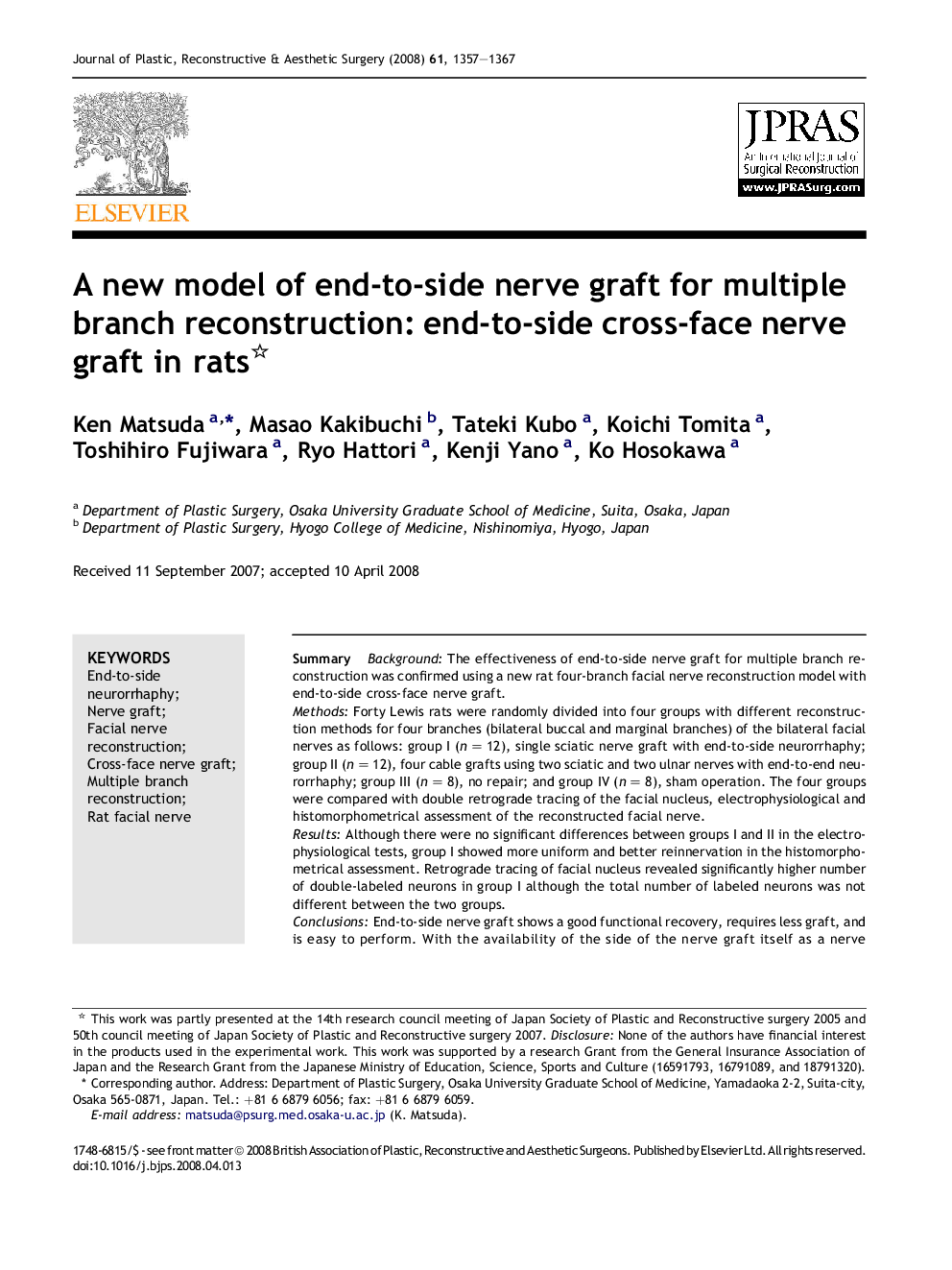| Article ID | Journal | Published Year | Pages | File Type |
|---|---|---|---|---|
| 4120541 | Journal of Plastic, Reconstructive & Aesthetic Surgery | 2008 | 11 Pages |
SummaryBackgroundThe effectiveness of end-to-side nerve graft for multiple branch reconstruction was confirmed using a new rat four-branch facial nerve reconstruction model with end-to-side cross-face nerve graft.MethodsForty Lewis rats were randomly divided into four groups with different reconstruction methods for four branches (bilateral buccal and marginal branches) of the bilateral facial nerves as follows: group I (n = 12), single sciatic nerve graft with end-to-side neurorrhaphy; group II (n = 12), four cable grafts using two sciatic and two ulnar nerves with end-to-end neurorrhaphy; group III (n = 8), no repair; and group IV (n = 8), sham operation. The four groups were compared with double retrograde tracing of the facial nucleus, electrophysiological and histomorphometrical assessment of the reconstructed facial nerve.ResultsAlthough there were no significant differences between groups I and II in the electrophysiological tests, group I showed more uniform and better reinnervation in the histomorphometrical assessment. Retrograde tracing of facial nucleus revealed significantly higher number of double-labeled neurons in group I although the total number of labeled neurons was not different between the two groups.ConclusionsEnd-to-side nerve graft shows a good functional recovery, requires less graft, and is easy to perform. With the availability of the side of the nerve graft itself as a nerve coaptation site, it can be an effective alternative in facial nerve reconstruction and be of great value in various kinds of peripheral nerve surgery.
